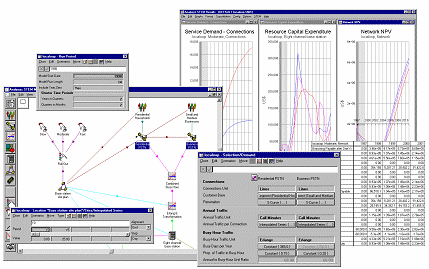In today’s constantly changing technology environment, there is a real business imperative to perform rapid and reliable evaluations
of new service concepts, and to be able to readily adapt such business cases to changing market conditions and emerging vendor solutions.
 STEM (Strategic Telecoms
Evaluation Model) provides a robust and efficient platform for
creating business and investment plans which embrace alternative market, technical
and economic futures. You can focus on the network configuration and business dynamics
while STEM manages the integrity of the underlying calculations.
STEM (Strategic Telecoms
Evaluation Model) provides a robust and efficient platform for
creating business and investment plans which embrace alternative market, technical
and economic futures. You can focus on the network configuration and business dynamics
while STEM manages the integrity of the underlying calculations.
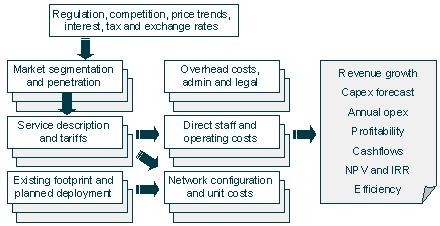
Business-case evaluation modelling process
Broadband Internet with voice option on ADSL
A competitive operator offers a selection of ADSL packages to the residential and
small business markets. In how many exchanges should the operator co-locate equipment?
What will be the economic impact of offering an analogue voice service in conjunction
with broadband Internet access using an ADSL line?
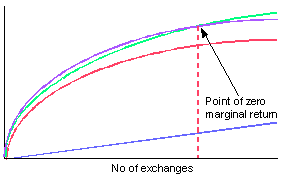
Market economic environment
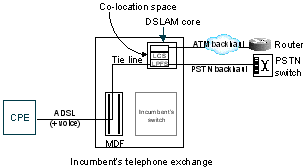
Network configuration assumption
STEM presents the technological options in a clear and consistent framework and
delivers standard GAAP financials and hundreds of built-in results through an integrated
charting interface which allows you to drill-down into individual elements and the
separate components of revenue and cost.
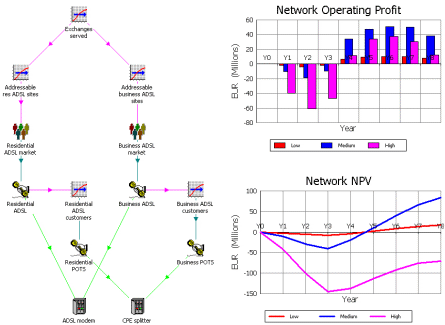
Service alternatives and business results
High-bandwidth mobility services and HSDPA
 Operators are considering
upgrading their basic 3G networks to support new services such as mobile TV/video
and high-speed Internet access, and must determine the business case for the required
network enhancements to support them, for example through HSDPA (high-speed downlink
packet access).
Operators are considering
upgrading their basic 3G networks to support new services such as mobile TV/video
and high-speed Internet access, and must determine the business case for the required
network enhancements to support them, for example through HSDPA (high-speed downlink
packet access).
A major vendor of HSDPA technology has used STEM to develop a comprehensive financial
modelling tool, both for its HSDPA business unit and for account managers communicating
directly with operators worldwide.
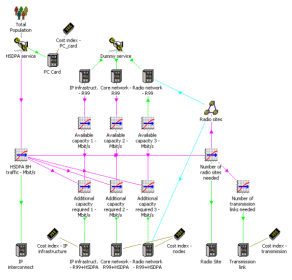 The model depicts an
operator’s current (R99) network and the introduction over ten years of higher bandwidth
services. Forecast demand is met firstly through existing R99 resource capacities
and then through the deployment of new HSDPA resources. The introduction of these
services has an impact on the operator’s core and radio networks, as well as transmission
link requirements, IP transport infrastructure, and IP peering costs. The model
includes resource lifecycle costs, price depreciation over time and existing R99
roll-out plans.
The model depicts an
operator’s current (R99) network and the introduction over ten years of higher bandwidth
services. Forecast demand is met firstly through existing R99 resource capacities
and then through the deployment of new HSDPA resources. The introduction of these
services has an impact on the operator’s core and radio networks, as well as transmission
link requirements, IP transport infrastructure, and IP peering costs. The model
includes resource lifecycle costs, price depreciation over time and existing R99
roll-out plans.
Established modelling process
Business-case models are commonly built the hard way, from the bottom up each time
in a spreadsheet. As well as the laborious re-working of basic calculations, editing
at the cell level inevitably leads to subtle copy errors which may only be detected
by a time-consuming review process. Arbitrary modelling techniques and a lack of
high-level structure guarantee slow handover as colleagues must comprehend the business
logic cell-by-cell.
STEM wraps up core elements of telecoms business planning, enabling rapid and reliable,
same-day development of business cases. Consistent structure and graphics provide
a common language across divisional teams. Decision makers have greater confidence
in models built on a reliable, standardised business-modelling platform.
